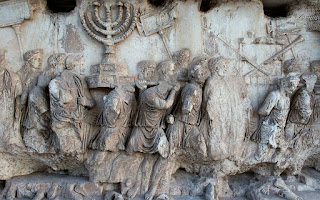I hope you’re familiar with Captain America’s shield. In case you’re not, here’s what you
need to know: It’s made of vibranium, an element you won’t find on the periodic table but you will find in the pages of Marvel comics.
Vibranium is an indestructible, somewhat magical element from the fictional nation of Wakanda. In its popular disc form, Captain America’s shield absorbs kinetic energy, making weapon impact minimal. He can even use it as weapon itself! His superspeed and ability to perfectly calculate trajectories lets him throw and bounce the shield like an indestructible frisbee.
Captain America’s shield is his totem, a symbol of the Cap’s resolve and heroism.
But the shield is only a tool. The Cap’s true powers come from a superserum, coursing through his veins.
And….at that, comic book fans would argue that his powers have nothing to do with the superserum but have everything to do with his heart.
Captain America is deeply altruistic. His sense of right and wrong gives him his true super powers.
As you know, Judaism also has its fair share of symbolic shields, reminders of our special mission to bring light unto the nations.
The one we know most is the Jewish Star…in Hebrew known as magein David…so more accurately translated as the shield of David.
 The symbol is ubiquitous these days, but use of the Star of David as a Jewish symbol only became widespread in 17th-century Europe, when it was displayed on synagogues to identify them as Jewish places of worship.
The symbol is ubiquitous these days, but use of the Star of David as a Jewish symbol only became widespread in 17th-century Europe, when it was displayed on synagogues to identify them as Jewish places of worship.
In antiquity, the most commonly used symbol of Judaism was the menorah, the seven-branched candelabrum that stood in the Temple in Jerusalem before it was destroyed by the
The star of David, on the other hand, is more ambiguous. First, the star has very little to do with King David. The origins and meanings are unclear, mostly because the six-sided star can be found across eastern cultures. It wasn’t until Zionism grabbed hold of it in the 1800’s that it became recognizable as distinctively Jewish and associated with Jewish peoplehood.
The meaning took a turn in the 1930’s when the Nazis famously tried to pervert this symbol of the Jews. They forced us to wear it mockingly.
Our symbol of strength was used to humiliate us. But despite the efforts, we came out the other side. And what did we do with the Magein David after WWII?
We stuck it smack dab in the middle of the Israeli flag – flying the face of those who tried to use it as a symbol of death. We reasserted its protective power. We said, this is not yours. Like Captain America’s shield, the power came from our resolve.
It is important for us to consider another symbol, though, that suffered at the hands of the Nazis.
If I were to put a swastika up on this screen, you’d probably have a quick and negative visceral reaction to it. Swastikas are well-known symbols of white supremacy and anti-semitism. We’ve been seeing them around Westchester in a frightening resurgence.

But that’s not how the symbol originated.
The Nazis stole it from Indian culture. “The swastika has [actually] existed for 5,000 years in Asia as a symbol of good fortune. It's a very common religious symbol in Hinduism, Buddhism, and Jainism. Placing the swastikas on the doorstep is a way of extending good wishes to all who come [through a person’s home].”[2]
This positive, life-affirming symbol is displayed most prominently during Diwali, a joyous five-day festival of lights that ended just last week.
But unfortunately, Indian friends of mine are at a loss. They want to proudly celebrate their sacred occasion with all its joyous symbols, but the swastika has been so co-opted, they aren’t displaying it for fear of mis-understanding.
It makes me so sad that the Nazis are able to win in this way – their evil erasing a joyful symbol for Indian-Americans. I urge each of us to keep in mind how important context is. As Jews, we should be helping our friends to display their religious symbol, helping to wipe away the dirt the Nazis threw onto it. We must look toward peaceful unity, not divisive appropriation. Keep that in mind next Diwali.
Which brings us to Veteran’s Day. Veteran’s Day used to be known as Armistice Day, honoring the end of WWI and a hope for lasting peace. But two wars later, the name was changed and the day concentrates on the contributions of our soldiers.
The name change reflects the sad reality of our society: The bravery of our armed forces? Indisputable. The possibility of peace? Debatable.
So perhaps Captain America can inspire us to carry on. In one issue of his comics, he’s encouraged to run for office and play the political game. The Cap declines, saying, “I have worked and fought all my life for the growth and advancement of the American Dream…We must all live in the real world…and sometimes that world can be pretty grim. But it is the dream…the hope…that makes the reality [of the world] worth living…I made a personal pledge to uphold the dream…and as long as the dream remains even partially unfulfilled, I cannot abandon it.”
May it be so for all of us. Ken Yhi Ratzon.






No comments:
Post a Comment